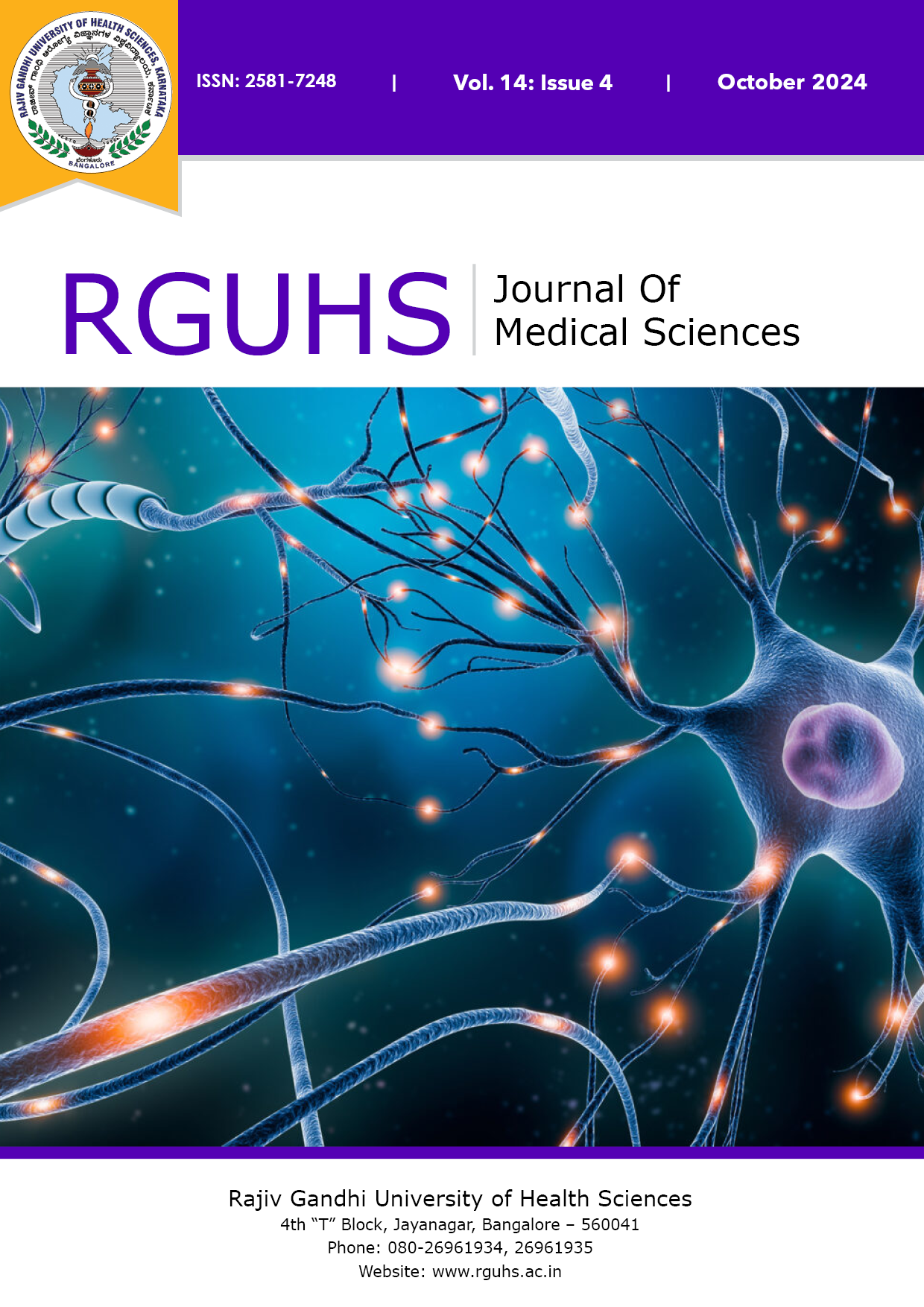
Abbreviation: RJMS Vol: 15 Issue: 1 eISSN: 2581-7248 pISSN 2231-1947
Dear Authors,
We invite you to watch this comprehensive video guide on the process of submitting your article online. This video will provide you with step-by-step instructions to ensure a smooth and successful submission.
Thank you for your attention and cooperation.
Karthik Adiga B1*
1 Junior Resident (3rd year Postgraduate), Department of Pulmonary Medicine, Bangalore Medical College and Research Institute, Bangalore.
*Corresponding author:
Dr. Karthik Adiga B, Department of Pulmonary Medicine, Bangalore Medical College and Research Institute, Bangalore. E-mail: karthikmala@gmail.com
Received date: July 17, 2021; Accepted date: September 26, 2021; Published date: October 31, 2021

Abstract
None
Keywords
Downloads
-
1FullTextPDF
Article
Sir, The WHO declared the outbreak of novel corona virus disease COVID-19, caused by the Severe Acute Respiratory Syndrome Corona virus 2 (SARS-CoV-2), as a pandemic on 11 March 2020. Tuberculosis (TB), a contagious disease caused by infection with members of Mycobacterium tuberculosis complex is the leading cause of death worldwide from a single infectious agent. With an estimated incidence of 27 lakhs, India contributes to 27% of the global burden of Tuberculosis. Despite all the obstacles, India is marching towards “End TB by 2025”, by leaping advances in several aspects through the National Strategic plan. However, there has been an overall decline in TB notification by 26% during January to June 2020 as compared to previous year, due to COVID -19 pandemic.1 Both TB and COVID -19 are mainly transmitted through respiratory route, primarily affecting the lungs and present with similar complaints of cough, fever and difficulty in breathing. Risk factors such as advanced age, diabetes mellitus, chronic respiratory diseases are associated with poor outcomes in both TB and COVID-19.2 Evidences from the previous pandemics suggest that TB with concurrent respiratory viral infections has been associated with higher mortality and increased intensive care unit admissions.3 History of TB, both active and treated is an important risk factor for COVID-19 infection.4 (Figure 1) The two act synergistically when they act on the same host, with pulmonary alveoli acting like battleground for both these agents. TB not only results in increased susceptibility, but also rapid and severe symptom development and disease progression with poorer outcomes. TB patients also tend to have co-morbid conditions like malnutrition, HIV, diabetes that increase the vulnerability. Hence, the convergence between TB and COVID-19 raises concerns and has implications beyond mortality. The exact mechanism of interaction between TB and COVID-19 is largely unknown; however, several mechanisms are under study. Interleukins (IL-4 and IL13) which are triggered by the inflammatory response are associated with immunopathological damage and is associated with worse outcomes in this co-infection. Stimulation of IFN Gamma, increased ACE-2 receptor expression, collapse of immune homeostasis due to lymphopenia – aggravate the inflammatory stimuli and intensify the damage.5 With the arrival of COVID-19 pandemic, the need for TB control and research becomes even more urgent as studies suggest that TB increases susceptibility to COVID-19 as well as causes worsening of symptoms. However, only limited data is reported on Tuberculosis and COVID-19 co-infection, which is probably due to lack of screening for TB in COVID-19 patients and for COVID-19 in patients with TB. Patients with active TB require special attention and appropriate preventive measures for the development of COVID-19. Hence, strategies like bi-directional screening of COVID-19 and TB must be emphasized in patients presenting with common complaints of cough and fever.
Supporting File
References
- Ministry of Health and Family Welfare / GOI RSS [Internet]. Available from: https://www.mohfw.gov. in/ (Last accessed on 14 July 2021).Google Scholar
- Ong CWM, Milori GB, Raviglione M et al. Epidemic and pandemic viral infections: impact on tuberculosis and the lung. A consensus by the World Association for Infectious diseases and Immunological disorders (WAidid), Global Tuberculosis Network (GTN) and members of ESCMID study group for Mycobacterial infections (ESGMYC). Eur Resp J 2020;56(4):2001727.Google Scholar
- Crisan-Dabija R, Grigorescu C, Pavel C-A, Artene B, Popa V et al. Tuberculosis and COVID-19: Lessons from past viral outbreaks and possible future outcomes. Can Respir J 2020;1401053.Google Scholar
- Stochino C, Villa S, Zucchi P, et al. Clinical characteristics of COVID-19 and active tuberculosis co-infection in an Italian reference hospital. Eur Respir J 2020;2001708.Google Scholar
- Mousquer GT, Peres A, Fiegenbaum M. Pathology of TB/COVID-19 Co-Infection: The phantom menace. Tuberculosis (Edinb) 2021;126:102020. Google Scholar
